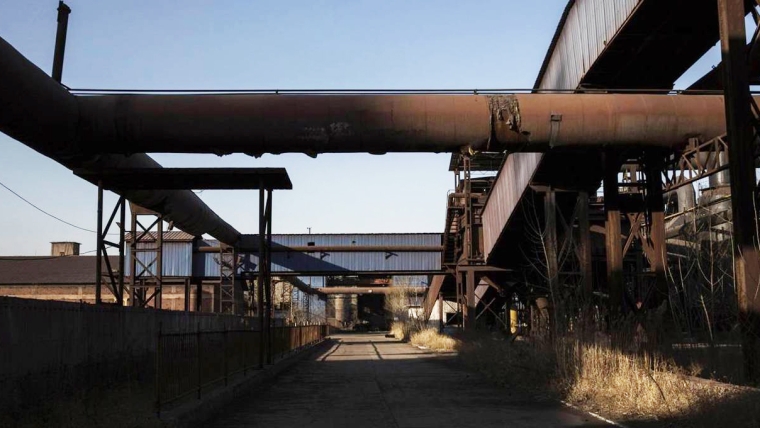
In recent months, Chinese overcapacity has been a major topic of discussion – and a source of controversy – among economists and policymakers around the world. While these concerns are not entirely off base, they are excessive and resolvable.
Over the past four decades, as China has shifted from a planned economy characterized by shortages to a market economy oscillating between insufficient aggregate demand and overheating, its government has often sought to eliminate overcapacity whenever it arose. In 2003, for example, a crackdown on overcapacity in the steel industry led to the shutdown of many steel mills.
Following the 2008 global financial crisis, China’s exports plummeted, leading to a significant economic slowdown. In the first quarter of 2009, Chinese GDP grew by just 6.1%, the lowest rate in more than a decade. To counteract this shock, China’s government introduced a CN¥4 trillion ($560 billion) stimulus plan. Fueled by massive investments – fixed-asset investment grew by 30.1% in 2009 and 23.8% in 2010 (year on year) – China’s economy rebounded sharply, achieving 10.6% growth in 2010.
Although aggregate demand also rose quickly, aggregate supply failed to keep pace, as it takes time for new investment to translate into increased production capacity. (The duration of the lag depends on the type of investment.) This mismatch contributed to an uptick in inflation, with the consumer price index rising by 3% in 2010.
By the time CPI growth peaked at 5.4% in March 2011, the Chinese government had announced that its top policy priority for the year would be to clamp down on inflation. And clamp down it did: from 2009 to 2011, China’s budget-deficit-to-GDP ratio fell from 2.8% to 1.1%, and new credit declined from CN¥9.6 trillion to CN¥7.5 trillion.
But the production capacity associated with past investments was already forming, if not becoming operational. Consequently, as fiscal and monetary tightening reduced aggregate demand, a new mismatch emerged, and overcapacity surged in many industries, including steel, automobiles, cement, electrolytic aluminum, pesticides, photovoltaics, and glass.
By this point, CPI growth had fallen below 3%, and the producer price index was in negative territory. Under these circumstances, the typical response to surging overcapacity would have been to return to fiscal and monetary expansion in order to stimulate the economy. Instead, China’s government decided to continue tightening. As a result, GDP growth fell to 7.7% in 2012 and has declined continuously ever since.
With hindsight, it seems entirely possible that inflationary pressures would have subsided later even if the government had not pursued fiscal and monetary tightening in 2011, owing to the gradual formation of new production capacities. If policymakers had pursued moderate fiscal and monetary expansion while encouraging the market to play a decisive role in eliminating sectoral overcapacity in 2012, China may well have achieved higher GDP growth rates in the ensuing years.
We cannot change the past, but we can heed its lessons to achieve a better future. In China’s case, this means implementing a more expansionary fiscal and monetary policy today. This would help reduce “overcapacity” at the macroeconomic level, which is equivalent to “lack of effective demand,” while creating more space to eliminate overcapacity at the sectoral level – a process in which China’s government should be allowing the market to play a decisive role.
All this would go a long way toward improving China’s trade balance. Though there is no justification for countries to introduce protectionist trade policies in the name of “national security” – as the United States, for example, has been doing – China must ensure that it adheres to all World Trade Organization rules.
On this front, the Third Plenary Session of the 20th Central Committee of the Communist Party of China, held earlier this month, was encouraging. As the meeting’s communiqué noted, China plans to “enhance [its] capacity for opening up” its own economy to the outside world; foster “new drivers of foreign trade”; and develop, through expanded cooperation with other countries, “new institutions” to support an open global economy. As long as all parties are committed to mutually beneficial – and mutually respectful – engagement, no trade dispute is unresolvable.
Yu Yongding, a former president of the China Society of World Economics and director of the Institute of World Economics and Politics at the Chinese Academy of Social Sciences, served on the Monetary Policy Committee of the People’s Bank of China from 2004 to 2006. Copyright: Project Syndicate, 2024, and published here with permission.
1 Comments
I didnt see the Third Plenary session as encouraging. It didnt really address the issue highlighted above - which is that China needs to be implementing a more expansionary fiscal and monetary policy today
and "new drivers of foreign trade" and "new institutions" doesnt really signal that they intend to cooperate with the current global rules or institutions that they have already signed up to
although this isnt an excuse for others, especially the USA, to also trash the same rules and institutions
Bumpier ride coming up for little ol' NZ - we should take advantage of the subsidized products they want to ship to us while we can - especially the likes of solar panels and associated generating equipment

We welcome your comments below. If you are not already registered, please register to comment
Remember we welcome robust, respectful and insightful debate. We don't welcome abusive or defamatory comments and will de-register those repeatedly making such comments. Our current comment policy is here.